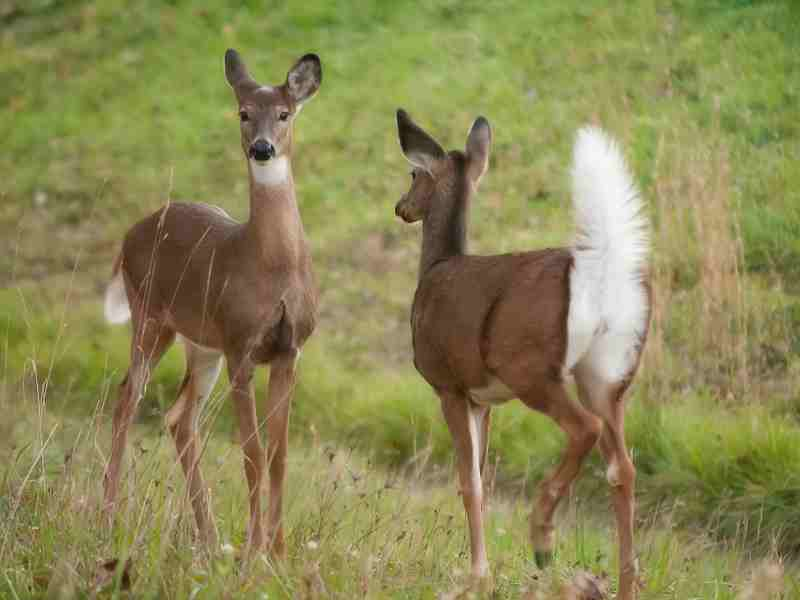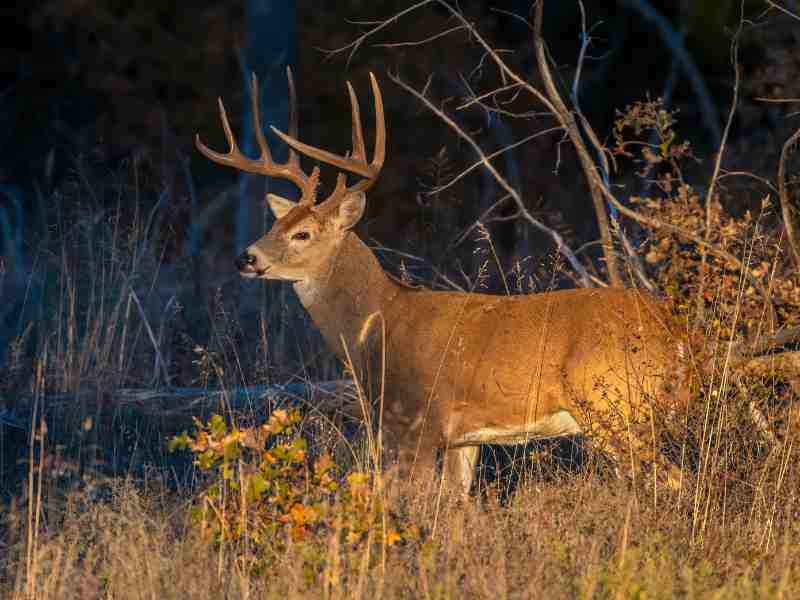Through a sophisticated array of sensory abilities, bucks employ various strategies to evade hunting pressure and ensure their survival.
Comparable to skilled detectives, bucks possess acute hearing, a strong sense of smell, and excellent peripheral vision, allowing them to detect and sense danger from a distance.
Contents (Jump to Topic)
ToggleCrepuscular by nature, they browse mainly at dawn and dusk. But they modify their behavior during daylight hours, exhibiting caution and retreating to safer areas.
Seeking refuge in dense vegetation and thick cover, bucks skillfully navigate through thickets, utilizing their agility and environmental knowledge.
In addition, they regularly adapt and change their patterns as they learn from past experiences to achieve minimal hunting pressure and avoid encountering hunters.
Key Takeaways
- Bucks have highly developed senses of hearing, smell, and vision.
- Bucks are primarily crepuscular animals and are more active at twilight hours to avoid human presence.
- Bucks seek dense vegetation and thick cover to hide from hunters and reduce their visibility.
- Bucks are intelligent animals that can adapt to changing hunting patterns and constantly change their patterns to elude hunting pressure.
Sensory Abilities
Bucks possess highly developed sensory abilities, including very good hearing, a strong sense of smell, and excellent peripheral vision.
These abilities help them to detect potential threats. They can even detect the slightest sounds, helping them sense predators or hunters nearby.
Bucks also have a strong sense of smell, enabling them to detect human scent from a distance.
This heightened olfactory perception helps them avoid areas with high hunting pressure, as they can detect the presence of humans and alter their behavior accordingly.
Furthermore, their excellent peripheral vision allows them to spot movement and potential dangers from the corners of their eyes, enhancing their ability to evade hunting pressure.
Bucks, those elusive icons of the wilderness. With instincts as finely tuned as their impressive antlers, they employ ingenious strategies to outsmart the pressures of human pursuit.
Bucks also employ camouflage techniques, utilizing their natural coloring and patterns to blend in with their surroundings.
Crepuscular Behavior
There are a bunch of animals that are 100% nocturnal, which allows them to be more active during the night and avoid human presence.
But deer are not nocturnal but rather crepuscular.
They sometimes sleep during the day and at night. Deer typically seize the cover of dawn and dusk to thrive. But they can shift to more diurnal and nocturnal activity as needed.
read.. do nocturnal bucks exist?
This behavior has significant impacts on mating behavior and population dynamics.
Utilizing Thick Cover
Utilizing dense vegetation and thick cover, these animals employ their agility and environmental knowledge to navigate challenging terrain.
Bucks seek out areas with thick cover to hide from hunters, using their understanding of the landscape to move through thickets.
The thick cover gives them a sense of security and reduces their visibility, keeping them hidden from hunting pressure.
Bucks often bed in areas with thick cover, ensuring their undetected presence. By utilizing thick vegetation, bucks minimize the risk of encountering hunters and increase their chances of survival.

Changing Patterns
Adapting to increased hunting pressure, these animals demonstrate their intelligence by modifying their feeding and bedding locations to avoid encountering hunters.
Bucks are intelligent animals that can adapt to changing hunting patterns.
When hunting pressure increases in certain areas, bucks move to less pressured zones. They may change their feeding and bedding locations to avoid hunters.
Feeding habits:
- Bucks may shift their feeding areas to less hunted regions.
- They may feed during less active hunting times, such as early morning or late evening.
Avoiding Human Scent
To minimize the detection risk, deer employ various tactics to avoid the scent left by human presence.
One such tactic is modifying their travel routes. Bucks may alter their typical paths to avoid crossing paths with hunters or areas with strong human scent.
Another tactic employed by deer is using wind direction to their advantage. Bucks have a keen sense of smell and can detect a human odor from afar.
They constantly check for human scents and avoid areas with strong smells.
By utilizing wind direction, bucks can determine the location of human scent and adjust their movements accordingly to minimize the risk of detection.
Before you go…
In the dance between bow and buck, understanding their strategies is crucial. Bucks are like nature’s detectives, armed with sharp senses.
They hear the faintest rustle, smell even the slightest hint of us, and see movement in their periphery. This gives them an edge in dodging our pursuit.
They aren’t creatures of the night but smart adapters, switching between day and night as needed. Their secret lies in the cover – dense vegetation is their ally, hiding them from our eyes.
And here’s the kicker: bucks remember. They learn from past run-ins, avoiding our trails.
So, remember these lessons: blend with the land, know when to tread, and be the wind’s friend.






